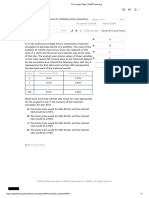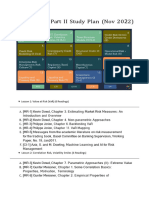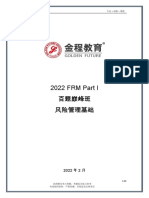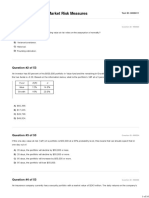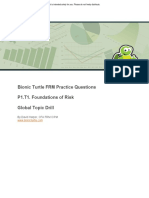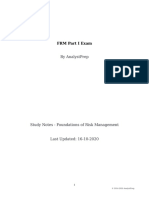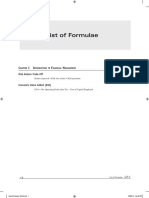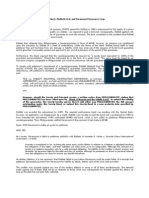100% found this document useful (1 vote)
966 views3 pagesFRM Part I Formulas
The document provides a comprehensive list of essential formulas for the Financial Risk Manager (FRM) Part I exam, covering key areas such as Time Value of Money, Probability and Statistics, Risk-Return Measures, Value at Risk, Fixed Income, Capital Asset Pricing Model, Portfolio Theory, Option Pricing, Credit Risk, and Interest Rate Models. Each section includes specific formulas and their calculations, which are crucial for understanding risk management practices. It emphasizes the importance of applying these formulas with real-world data in preparation for the exam.
Uploaded by
Vivek AyyagariCopyright
© © All Rights Reserved
We take content rights seriously. If you suspect this is your content, claim it here.
Available Formats
Download as PDF, TXT or read online on Scribd
100% found this document useful (1 vote)
966 views3 pagesFRM Part I Formulas
The document provides a comprehensive list of essential formulas for the Financial Risk Manager (FRM) Part I exam, covering key areas such as Time Value of Money, Probability and Statistics, Risk-Return Measures, Value at Risk, Fixed Income, Capital Asset Pricing Model, Portfolio Theory, Option Pricing, Credit Risk, and Interest Rate Models. Each section includes specific formulas and their calculations, which are crucial for understanding risk management practices. It emphasizes the importance of applying these formulas with real-world data in preparation for the exam.
Uploaded by
Vivek AyyagariCopyright
© © All Rights Reserved
We take content rights seriously. If you suspect this is your content, claim it here.
Available Formats
Download as PDF, TXT or read online on Scribd
/ 3





